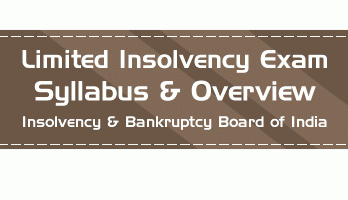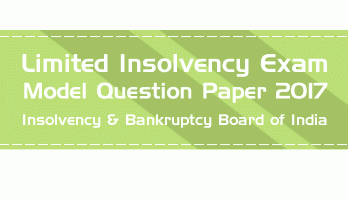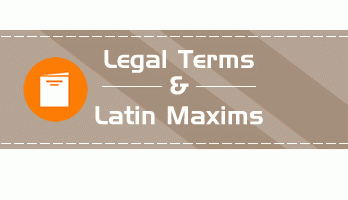76. In the matter of P K Ores Private Limited vs. tractors India Private Limited [Company Appeal (AT) (Insolvency) No. 56 of 2017], NCLAT set aside the order of NCLT on the ground of–
a) non-delivery of demand notice under section 8 of Insolvency and Bankruptcy Code, 2016.
b) violation of principles of equality
c) non-existence of any default on the part of corporate debtor
d) violation of principles of natural justice and existence of a dispute
Ans.(d)
77. The Supreme Court in Mobilox Innovations(P) Limited v. Kirusa Software (P) Limited CA No. 9405 of 2017, has interpreted the term “_____________”.
a) Operational creditor
b) Existence of dispute
c) Time value of money
d) Doctrine of repugnancy
Ans.(b)
78. In the case, Macquarie Bank Ltd. Vs. Shilpi Cable Technologies Ltd., [CP (IB) No. 64/ (PB)/ 2017, NCLT (Principal Bench, New Delhi)], which one of the following was considered as ‘condonable fault on the part of the applicant’:
a) The applicant has not filled up the details of the legal firm
b) The applicant has not filled up the name and address of the power of attorney
c) The applicant has not filled up the proposed name of the IRP
d) The applicant has not paid the fee
Ans.(b)
79. In the case, M/s VDS Plastics Pvt.Ltd. Vs. M/s Pal Mohan Electronics Pvt.Ltd., [C.P. No. (IB)/37/ 2017, NCLT (New Delhi Bench)], the National Company Law Tribunal has
a) admitted the petition of the operational creditor for initiation of Corporate Insolvency Resolution Process
b) directed the petitioner to rectify the application and submit
c) dismissed the application as the alleged claim was disputed
d) dismissed the application as the operational creditor has not approached the National Company Law Tribunal with clean hand
Ans.(c)
Attempt Questions 80-83 based upon the following case study/transaction analysis XYZ’A Public Limited Company engaged in the construction of roads is in default in repayment of dues to the following:
General slowdown in construction activities had resulted in low capacity utilization and inadequate cash generation for timely payment of dues to all concerned.
Repeated follow-up by the Financial Institutions with the corporate debtor, ‘XYZ’ for submitting its specific plan of action for repayment of dues did not evoke any response. Therefore, after a joint lenders meeting, all the financial institutions unanimously decided to apply under the provisions of the Insolvency and Bankruptcy Code,2016 to the National Company Law Tribunal (NCLT) for starting the process of insolvency resolution in respect of corporate debtor, ‘XYZ Ltd’.
Financial Creditors filed an application before NCLT which was admitted by NCLT on 20th May 2017 and orders issued for commencement of a moratorium period of 180 days, appointment of an interim resolution professional and for his making a public announcement inviting claims from all concerned
With the advent of the public announcement the following creditors were identified:
1. Financial debts owed to unsecured creditors (F1) – 5 crores
2. Workmen’s dues for the period of 24 months preceding the liquidation commencement date (F2) – 15 crores
3. Debts owed to a secured creditor who has relinquished his security (F3) – 30 crores
4. Debts owed to the Central Government (F4) – 17 Crores
5. Debts owed to a secured creditor for any amount unpaid following the enforcement of security interest (F5) – 26 Crores
B was the statutory auditor of the corporate debtor and A Ltd. has been identified as a related Party to XYZ Ltd.
80. A who has been appointed as the resolution professional can take the following actions without the approval of the committee of creditors:
a) Undertake transactions with any related party
b) Make changes in the appointment of statutory of B
c) Record any change in the ownership interest of XYZ Ltd
d) File applications for avoidance of preferential or undervalued transactions
Ans.(d)
81. The Adjudicating Authority has by an order declared moratorium period on the &XYZ Ltd’ Vide the moratorium order, the following shall not be prohibited:
a) the action to foreclose security interest created by the corporate debtor in respect of its property
b) the institution of arbitration proceedings
c) the recovery of any property by an owner or lessor where such property is occupied by or in the possession of the corporate debtor.
d) The supply of raw material essential for laying down the roads from its creditors
Ans.(d)
82. The NCLT rejected the resolution plan for want of compliance with the Insolvency and Bankruptcy Code, accordingly the proceeds from the sale of liquidation shall be distributed in the following order of priority:
a) F2 – F1 – F3 – F4 & F5 (ranked equally)
b) F2 & F5 (ranked equally) – F3 – F1 – F4
c) F2 & F5 (ranked equally) – F1 – F3 – F4
d) F3 & F2 (ranked equally) – F1 – F5 & F4 (ranked equally)
Ans.(d)
83. The NCLT rejected the resolution plan for want of compliance with the Insolvency and Bankruptcy Code and proceeded to initiate liquidation proceedings. During the course of liquidation, it was found that Company had gifted some valuable assets of the Company to another friendly company M/s DEF Ltd on 20th April 2015 and F1 reported the transaction to the National Company Law Tribunal by way of an application. The National Company Law Tribunal may pass an order:
a) Rejecting the application;
b) Requiring the Insolvency and Bankruptcy Board to initiate disciplinary proceedings against the liquidator;
c) Require any person to pay sums in respect of benefits received by such person to the liquidator;
d) Require any person to submit relevant documents of transaction to Insolvency and Bankruptcy board.
Ans. (a)
Attempt Questions 84-87 based upon the following case study/transaction analysis
“ManChow” was a restaurant located at leased premises in Rohini, New Delhi. It boasted a great reputation, award-winning chefs and an immaculate fit-out. Much of its business came from executive lunches and theatre patrons. Following the opening of “Authentic Cuisine”, another excellent restaurant in the nearby vicinity, trading losses were incurred by ‘Manchow’ and eventually the business became insolvent. Efforts to either have the rent reduced or to sell the business were unsuccessful.
Suppliers of food, liquor and utilities were unpaid for supplies provided in the previous 45 – 60 days, amounting to around Rs. Eighty-five thousand. There were rental arrears for one month amounting to Rs. forty-five thousand towards landlord Mr. Dhiraj Kumar (the landlord had received advance rent for three months, lease deed provided for one-month rent as security and one-month rent as advance). “ManChow” also had a secured creditor, “SAFE Bank”. The bank indicated that it did not wish to appoint a receiver/ file for insolvency as the accounts were regularly maintained.
“ManChow” was managed by Mr. Nitin Mukesh, as a sole proprietor. He employed a staff of 6 people, including a chef, an assistant chef, two waiters and one house-keeping. The salaries due to these employees were paid in half since the past three months.
84. Whether “ManChow” can apply for fresh start process?
a) Yes, before the National Company Law Tribunal
b) No, ManChow is ineligible for applying for fresh start process
c) No, as he is required to seek prior approval of the Insolvency and Bankruptcy Board of India
d) Yes, before the Debt Recovery Tribunal
Ans. (b)
85. In priority of payment of debts who will be paid before the wages and unpaid dues of employees of the bankrupt?
a) Unpaid debt owed to the employees other than the workmen for a period of 12 months preceding the bankruptcy commencement date.
b) Workmen’s dues for 24 months preceding the bankruptcy commencement date and the debts owed to the secured creditors.
c) Debt owed to landlord Mr. Dhiraj Kumar
d) Unpaid suppliers of food, liquor and utilities
Ans. (b)
86. Who can initiate an insolvency resolution process?
a) ManChow
b) Nitin Mukesh
c) SAFE Bank
d) Dhiraj Kumar
Ans. (b)
87. In the above situation if a bankruptcy order is passed against “ManChow”, who shall prepare the list of creditors
a) Bankruptcy trustee
b) Adjudicating Authority
c) Insolvency Professional Entity
d) Information Utility
Ans. (a)






